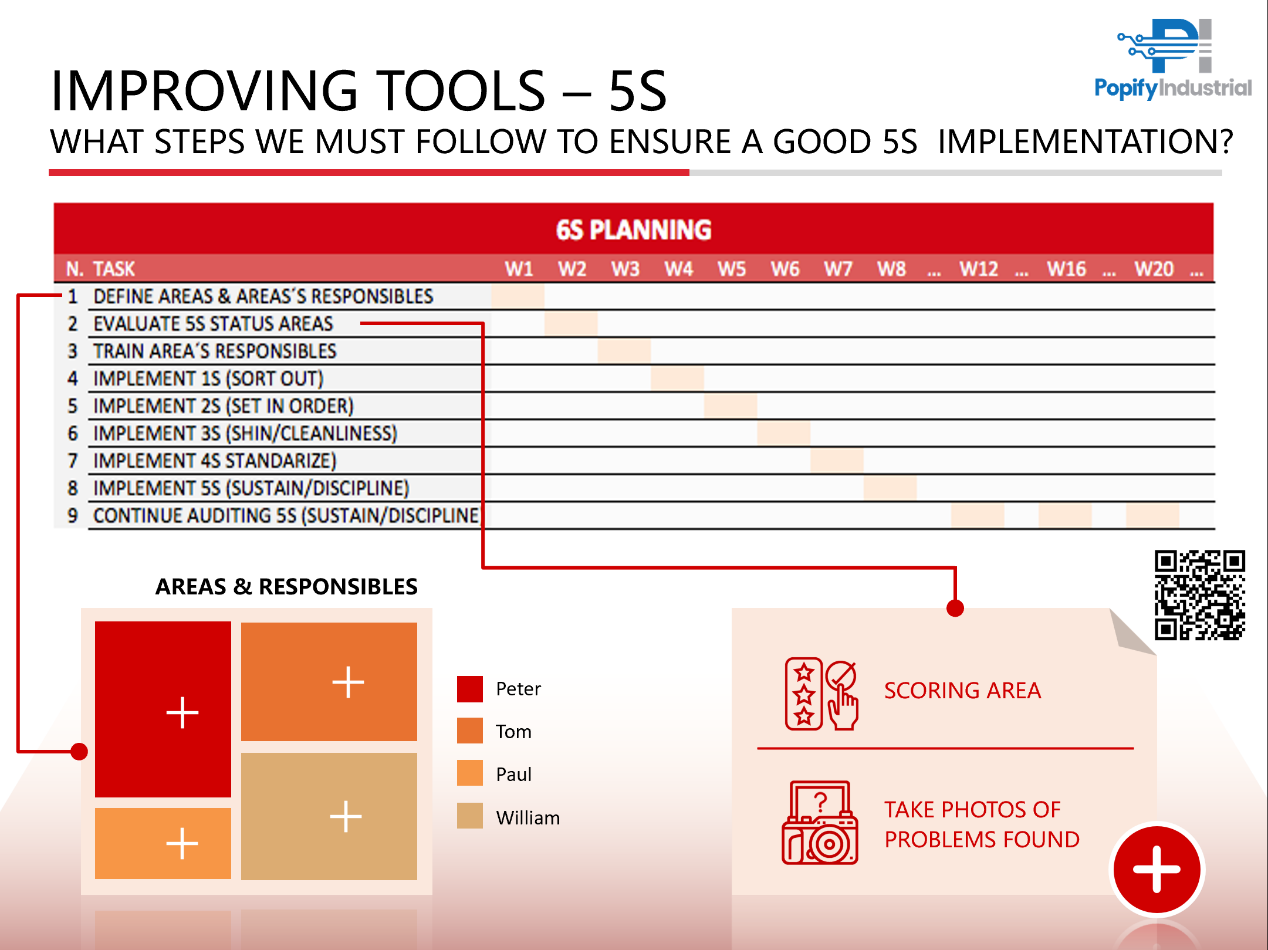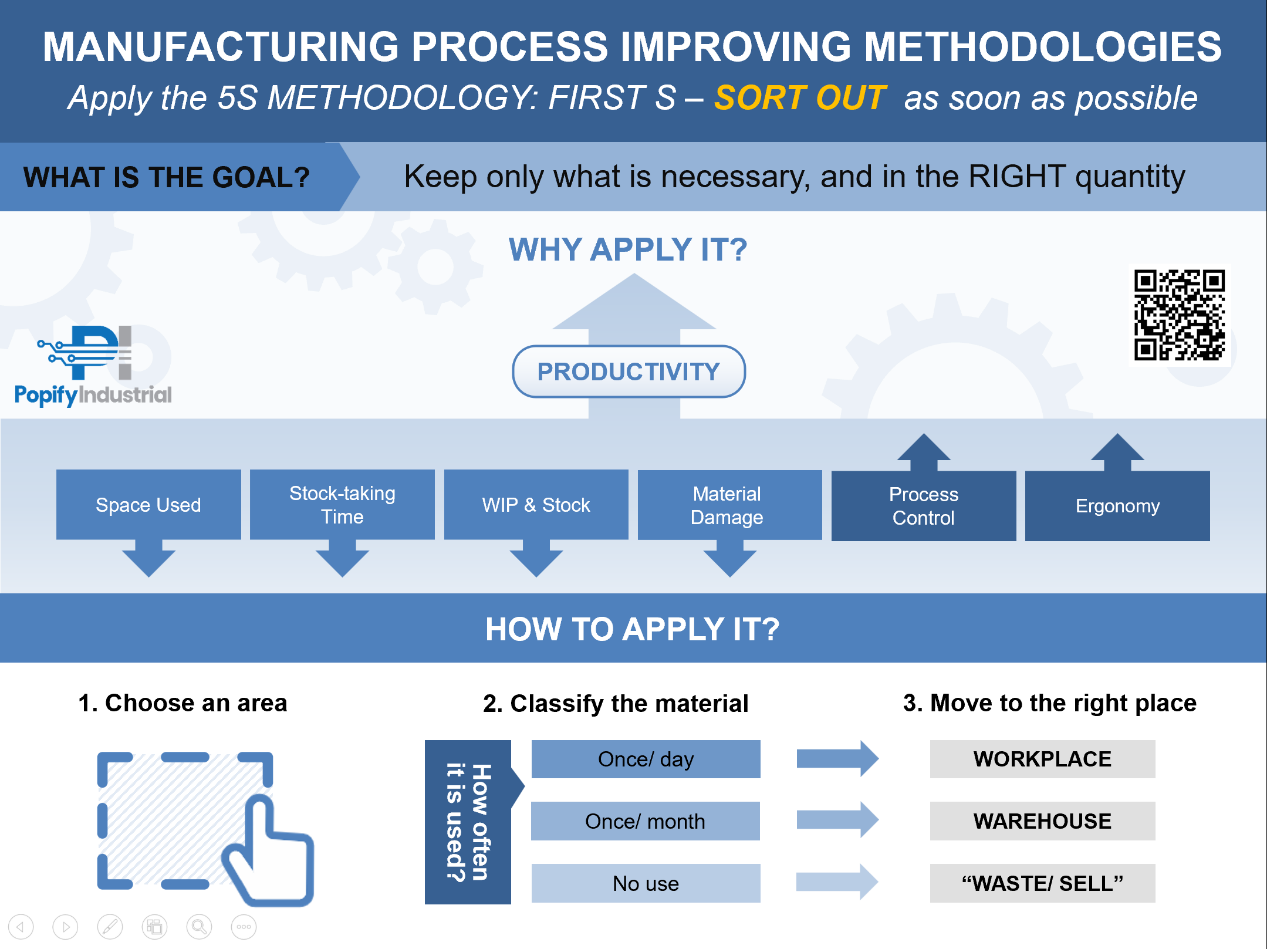Pasos a seguir en la implementación de 5S...
Sep 27,2023


The first step of the 5S methodology is "Sort Out.”
This phase can be summarized with the phrase "Keep only what is necessary, and in the right quantity.”
By removing unnecessary elements from our workplace, we can achieve several benefits:
-
- Reduction of space usage: We eliminate unnecessary items, thereby freeing up space in the workplace.
- Reduction of purchasing costs: By avoiding the purchase of duplicate materials, we can minimize unnecessary expenses. For instance, if one workstation has two screwdrivers but only needs one, and another workstation needs a screwdriver, the worker might unknowingly buy a new one.
- Reduction of stock: Removing unnecessary items helps in reducing the overall stock and inventory.
- Reduction of inventory time for work-in-progress (WIP) and warehouse stock: By knowing all the materials in detail, we can streamline inventory management, saving time and effort.
- Reduction of damage to stored materials and products: By decluttering and organizing the workplace, we can minimize the chances of damaging materials and products.
- Increased process control: A clutter-free and organized workplace enhances process control. It is easier to manage and work with only the necessary materials instead of having a workplace filled with unnecessary items.
- Improved ergonomics: By strategically placing frequently used materials close to the worker and less frequently used items farther away, we can decrease physical and mental fatigue. A better-organized workplace also facilitates efficient work by reducing the need to search among unnecessary materials for the required items.
All these improvements contribute to increase productivity in the manufacturing process.
Here's a brief guide on implementing the first phase of the 5S methodology:
- Choose the area where you want to apply the first phase of the 5S.
- Classify (separate) the elements into three groups based on their frequency of use:
- Group 1: This group should contain the necessary elements that are likely to be used at least once a day. Ensure that the quantity of elements is set to the amount required for daily work.
- Group 2: This group includes elements that are used more or less frequently than once a month.
- Group 3: This group comprises elements that will never be used or are used once per year or less.
Examples of elements in these groups can include machines, dies, tools, products, work-in-progress items, raw materials, supplies, containers, workbenches, documents, wagons, shelves, pallets, and more.
To determine the group for each element, consider questions such as their purpose, who uses them, frequency of use, and whether they are suitable for the task at hand. Also, assess whether their placement is appropriate based on their frequency of use and weight.
The final step is to remove elements from the second and third groups from the workplace. Store the elements from Group 2 near the workplace for easy access and send the elements from Group 3 to the warehouse, or consider recycling, selling, or renting them.
Noticias relacionadas


